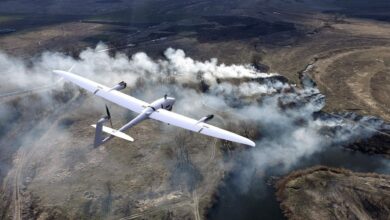The US Naval Forces Central Command (NAVCENT) has begun operating the Saildrone Explorer Unmanned Surface Vessel (USV) in the Arabian Gulf as a part of an initiative to expand its 5th Fleet with new unmanned systems.
The Saildrone was launched in the Gulf of Aqaba in December last year, where the USV operated continuously at sea for more than 30 days, meeting mission objectives.
A month after the launch, NAVCENT’s dedicated team for the new unmanned vehicle Task Force 59 began operational testing off the coast of Bahrain.
“The initial Saildrone assessment phase at sea in the Gulf of Aqaba has exceeded our expectations,” Task Force’s Deputy Commander Thomas McAndrew said in a navy statement. “We are applying the results and rapidly expanding operations,” he added.
Task Force Creation
NAVCENT created The Task Force in Bahrain in September last year, where its headquarters are currently located.
In September last year, NAVCENT created the task force in Bahrain, where its headquarters are currently located. It is also conducting evaluations of the new USVs Mantas T-12 and Devil Ray T-38 off the coast of Bahrain before the International Maritime Exercise (IMX) 2022, scheduled in February. IMX will include unmanned vehicles from member nations and will be the largest unmanned exercise in the world.
The Middle East has been chosen for the ongoing evaluations due to its climate, geography, and strategic importance. The area also hosts the most extensive global maritime partnership and has key waterways vital for international commerce.
The Saildrone Explorer
The wind-powered Saildrone is 23 feet (7 meters) long and 16 feet (4.87 meters) high. It is equipped with solar panels to power onboard computers and sensors with artificial intelligence technologies.
The robotic vessel was originally designed to collect environmental information on the oceans for research. In 2013, it made the 4,100-km (2547.6-mi) crossing from the west coast of the US to Hawaii.
The USV is designed for long-range missions in extreme weather, including hurricanes, without the requirement for fuel or new batteries for up to 12 months.
It is equipped with sonar for mapping the ocean floor to a depth of 7 kilometers (4.34 miles), creating models to predict the intensity of tsunamis and areas of maximum damage for aid efforts.
Apart from supporting data-gathering missions, the US will employ the USV to patrol the Red Sea.












